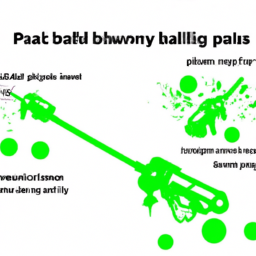How Paintball Guns Work Exploring the Mechanics
How Paintball Guns Work
How Paintball Guns Work
Paintball has exploded in popularity as a fun and exciting way to spend your free time, enjoy a bit of healthy competition, and get a workout while you're at it. But how do paintball guns work, and what exactly are they capable of? In this article, we'll outline the basics of paintball weaponryeverything from the guns themselves and their features, to what's inside the paintballs themselves.
The Components of a Paintball Gun
A paintball gun is made up of several key components, including the body, the tank, the barrel, the hopper, and the trigger. Each of these pieces of hardware works in tandem to propel a paintball, so let's take a closer look at each.
The Body
The gun's body is the main portion of the paintball gun, housing the tank, hopper, and other components. It is also the portion of the gun that typically features unique artistic elements, such as custom milling clickable markers.
The Tank
The tank on a paintball gun is responsible for storing the compressed air or CO2 that ultimately propels the paintball. The tanks for paintball guns are typically cylindrical in shape and can hold anywhere from 0.2 liters up to 2 liters of air, depending on the size of the gun.
The Barrel
The barrel is the part of the paintball gun that the paintball travels through once it is fired. A typical barrel is 15 inches long and 3/8 inches in diameter, though some guns may feature barrels of different sizes.
The Hopper
The hopper is the part of the paintball gun responsible for holding the paintballs, usually located on the top of the gun body. The typical hopper holds between 200 and 300 paintballs, but some larger hoppers can fit up to 500.
The Trigger
The trigger is the part of the paintball gun that you use to fire the gun. Pulling the trigger releases the compressed air or CO2 from the tank in order to propel the paintball out of the barrel.
What's Inside the Paintballs?
Paintballs come in a variety of shapes, sizes, and colors, but they all contain the same basic components: a gelatin shell, pigment or dye, and a fill gas like nitrogen or carbon dioxide. The gelatin shell is designed to break when the paintball makes contact, releasing the dye, which creates the telltale splatter of paint when the ball is fired. The fill gas is what propels the paintball out of the gun barrel, using the compressed air or CO2 from the tank.
Types of Paintball Guns
There are a number of different types of paintball guns in use today. The most popular type of gun is the pump gun, which is typically heavier and more powerful than its counterparts. Pump guns aren't typically used in tournaments, however, as they require the user to manually pump the gun for each shot. Semi-automatic guns are the most popular type of gun for tournaments, as they are lightweight and require little effort on the part of the user. Fully automatic guns, while available, are usually banned from tournaments due to their range and rate of fire.
Brief Recap
Paintball guns are made up of several important components, including the body, tank, barrel, hopper, and trigger. Paintballs are filled with a gelatin shell, pigment or dye, and a fill gas like carbon dioxide or nitrogen. And there are three main types of paintball guns: pump guns, semi-automatics, and fully automatics. With this information in hand, you'll have a better understanding of how paintball guns work, and which type of gun is right for you.

Previous Page
Next Page
